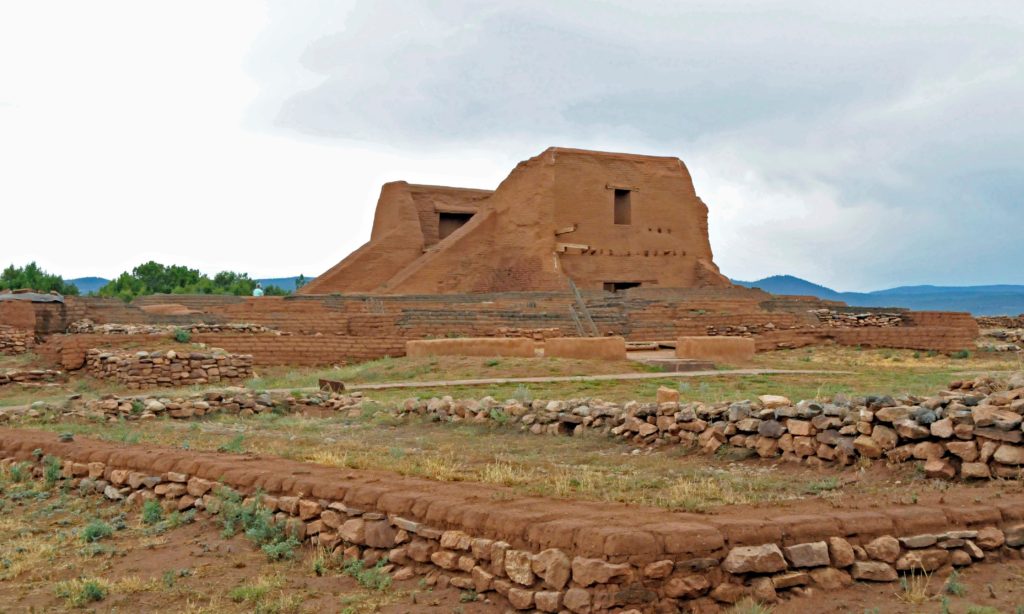
Pecos National Historical Park provides an opportunity to explore the ruins of an ancient Puebloan village and a Civil War battlefield.
In about 1100 A.D., the Puebloans, an indigenous people living throughout the American Southwest, established a village of mud buildings 26 miles east of what is now Santa Fe, New Mexico. Located near the strategic Glorietta Pass, the villagers became prosperous trading with other indigenous peoples. In 1540, Spanish forces under Vasquez de Coronado discovered the village, then a five-story pueblo housing 2000 residents, and named it “Pecos.” In 1598, the Catholic Church sent a Franciscan friar to Pecos. He destroyed the circular kivas the Puebloans used for religious ceremonies and smashed their idols, creating enormous resentment. The original priest was replaced in 1621 by a more tolerant one, who convinced the residents to build a massive adobe church, by far the largest in New Mexico. In 1680, Puebloans throughout New Mexico revolted against what they considered unnecessarily harsh Spanish rule. The residents of Pecos killed their priest, demolished the huge church and built a new kiva near the church. The Spanish fled, but soon returned and built a much smaller adobe church within the site of the earlier one. In the late eighteenth century, Pecos began to decline from disease and Comanche raids and by 1831 Pecos and its historic church were abandoned.
In 1965, the ruins of Pecos became part of the Pecos National Historical Park, enlarged in 1990 to include almost 7000 acres. A trail takes visitors past the foundations of the original adobe church, the still-standing walls of its replacement and a restored stone kiva. The park also incorporates the site of the Battle of Glorietta Pass, an 1862 battle along the Santa Fe Trail that ended the Confederate campaign to separate the Union from the West.
Comments are closed.